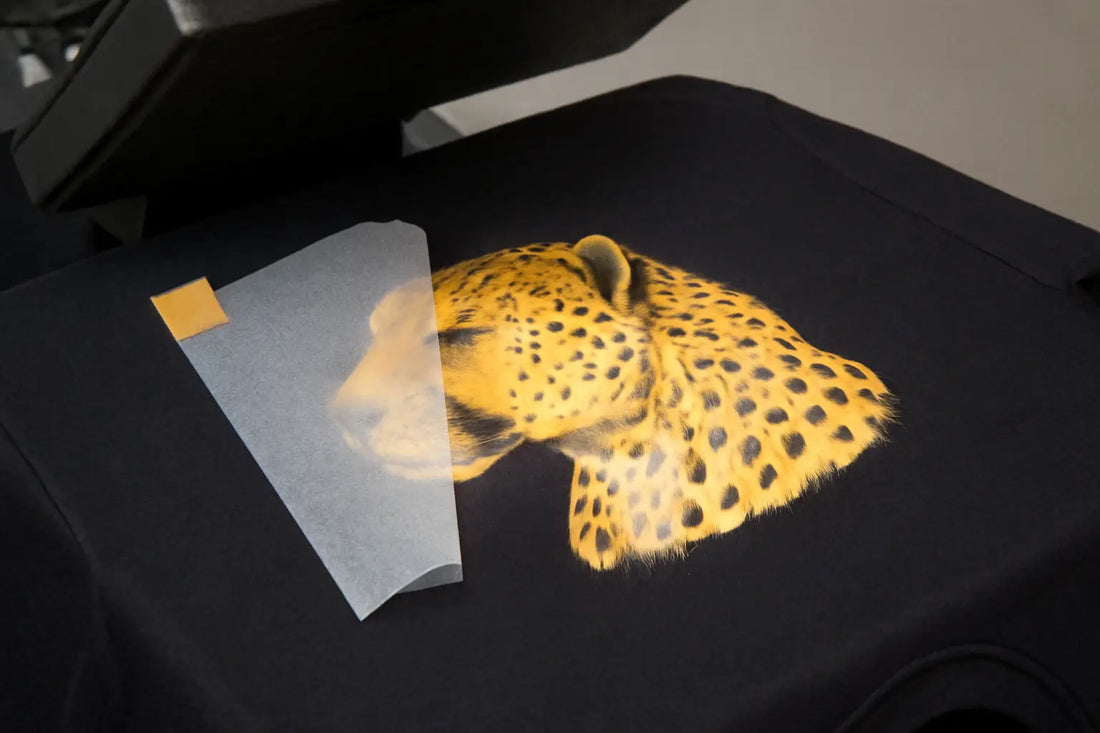Ghosting in DTF Transfers: How to Avoid Errors and Print Sharp Images Every Time
DTF printing issues can slow down your production and cause delays that ruin your reputation, especially if you need bulk prints. Humidity, temperature fluctuations, or even fingerprints can destroy an ideal transfer. One of the most frequent issues, however, is the ghost effect in DTF printing: that faint, blurry “double image” that ruins the overall print quality.
The good news is it's not arbitrary, and you don't have to embrace it as part of the process. Understanding what causes ghosting in DTF transfers and making little changes in the production process can help you save time, minimize wasted transfers, and maintain orders.
In this post, we'll go through some technical details about DTF transfers ghosting fix to learn some simple hacks that'll let you print high-definition transfers every time. So, let's get started!
Causes of Ghosting in DTF Transfers
Ghosting results from a change in the transfer after heat is added or when temperature and pressure are not exactly equal. Sometimes it's so faint that it's hard to notice without proper lighting; other times it can be prominent enough to upset a client or ruin an entire batch. Many DTF transfer printing mistakes come from the same underlying issues discussed below:
-
Opening the heat press too quickly can cause the shirt to lift while the ink is still hot and pliable.
-
Moving the garment right after pressing: hot transfers need a few seconds to cool and set.
-
Unequal pressure, too light on one side or too heavy on the other, can move the film.
-
Inaccurate temperature or time (too hot, too cold, too brief, or too long) can prevent the ink from adhering equally.
- Environmental factors like humidity can make DTF film absorb moisture, which results in irregular prints.
Once you see where the problems start, you can change your process to fix them.
How to Fix DTF Ghosting Without Spending a Dime
Though ghosting feels like a big issue, the solutions are unexpectedly simple and often free. Here’s how you can keep transfers sharp:
-
Open the press slowly. Wait half a second when the timer beeps. Then lift the press gently instead of popping it open fast. That small change keeps the film in place.
-
Allow the shirt to cool off. Heat makes ink soft and easy to smudge. After pressing, let the shirt sit on the platen for 5–10 seconds before moving it. Use a small fan for big runs.
-
Tape your transfers. Heat-resistant tape stops transfers from shifting when you close the press. It’s cheap, quick, and prevents most movement-related ghosting.
-
Check pressure often. When switching garment types, adjust pressure to keep it even.
- Control your workspace. Keep humidity around 40–60% and store transfers in sealed bags. Let cold transfers warm up before pressing.
These steps cost little but fix DTF print ghosting issues and save hours of reprints.
Best Settings to Prevent DTF Ghosting
Heat press settings matter most for ghost-free prints. Even perfect handling won’t help if your settings are wrong. Follow these guidelines to prevent DTF transfer printing mistakes and fine-tune as you test:
-
Temperature: Around 290–320°F (145–160°C). Too hot can over-melt adhesive; too cool won’t bond it fully.
-
Time: About 10–15 seconds. Too long may cause smudging; too short may not bond the ink.
- Pressure: Medium to firm, enough to press evenly but not flatten detail.
Each transfer brand or fabric may need tweaks, so run test prints and write down results. Over time, you'll build your own chart of what works best.
Fixing Double Image in DTF: Step by Step
Seeing two faint outlines instead of one crisp design? This can often caused by small alignment or movement issues. Here’s how to fix it:
-
Slow the press opening. Rather than yanking the heat press up, wait half a second, then lift gently.
-
Use heat tape. Even slight slips ruin detail. Tape keeps film steady.
-
Let the shirts cool. Don’t stack or fold them hot; let them rest a few seconds.
-
Check the platen level. A tilted platen makes the film slide and shifts prints.
-
Keep films dry. High humidity makes them curl or warp.
These steps don’t take long, but together, they stop double images and protect your work.
DTF Ghosting Troubleshooting Tips for Consistent Prints
Even with the right production process and the correct settings, ghosting sometimes returns, especially with new stock or in rush jobs.
-
Log every job. Write down temperature, pressure, time, garment type, and results. You’ll spot patterns.
-
Use a laser guide. Align every shirt to the same point to avoid DTF print alignment issues.
-
Test new films and inks. They might need different times or temps.
-
Clean gear daily. Dirty platens or Teflon sheets drag on transfers.
- Check calibration. Weekly, tighten bolts, verify heat with an IR thermometer, and adjust pressure.
These steps catch issues early, so you keep orders on time and prints sharp.
Why Choose Cheetah Transfers for Your Prints
At Cheetah DTF Print, we know ghosting in ready to press DTF transfers costs more than ink; it costs customer trust. That’s why we focus on premium DTF film and ink, making sharper edges and consistent prints. And you get tips, guides, and real support so your business keeps running smoothly, even if you’re new or scaling up.
Final Thoughts
Ghosting isn’t random, and it isn’t something you have to live with. With the right production techniques, correct settings, and regular checks, you can add sharp prints to your merchandise even if you are running a bulk batch. Make sure that you understand the most common causes of ghosting, take immediate steps to address those causes, and choose a reliable supplier for DTF transfers to get an outstanding final product.
Need reliable, high-quality transfers? Try our DTF Sample Pack to test the print quality.


